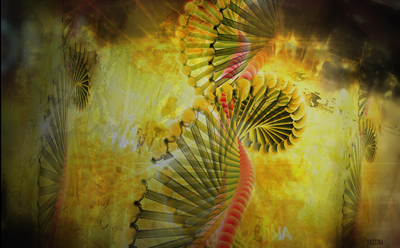\'SOS repair\' was the descriptive term coined by Miroslav Radman in 1974 to characterize the cellular stress response caused by exposure to ultraviolet (UV) radiation. More than 40 genes, regulated by the LexA repressor protein, are induced in response to DNA damage as part of the SOS regulon in Escherichia coli. When chromosomes are damaged, persisting regions of single-stranded DNA allow the assembly of activated RecA nucleoprotein filaments called RecA*. The presence of RecA* activates the transcriptional upregulation of SOS genes by facilitating the cleavage of the LexA repressor63. LexA binds to operators that contain a 20-bp consensus sequence64 with differential affinities so that genes with low affinities for LexA are induced early. Along with lexA itself, these genes include a significant number that are involved in accurate DNA repair processes, such as nucleotide excision repair (uvr) and recombinational repair (recA). The early induction of lexA along with DNA repair genes provides a regulation mechanism that ensures rapid repression of the SOS genes once the damage has been repaired. However, lesions may persist and induce a second mutagenic phase of the SOS system in an effort to rescue the cell.
UV-induced mutations require replication past sites of DNA damage, a process that is termed translesion synthesis (TLS). Three DNA polymerases are induced as part of the SOS regulon. Polymerase (pol) IV (dinB) and pol II (dinA) loci and, later, pol V (umuDC) were isolated using an elegant genetic screen to identify damage-inducible genes5. By catalysing TLS, DNA pol V is principally responsible for the vast majority of base substitution mutations that are targeted directly to chromosomal DNA-damage sites in rapidly dividing cells. DNA pol IV (and, to a lesser extent, DNA pol II) have an important role in generating adaptive mutations in non-dividing cells20, whereas all three SOS DNA polymerases contribute to cell fitness in stationary-phase cell populations21.
-----------
Lessons from 50 years of SOS DNA-damage-induced mutagenesis
Box 2 | Escherichia coli DNA polymerase V
From the following article:
Katharina Schlacher & Myron F. Goodman
Nature Reviews Molecular Cell Biology 8, 587-594 (July 2007)
doi:10.1038/nrm2198


